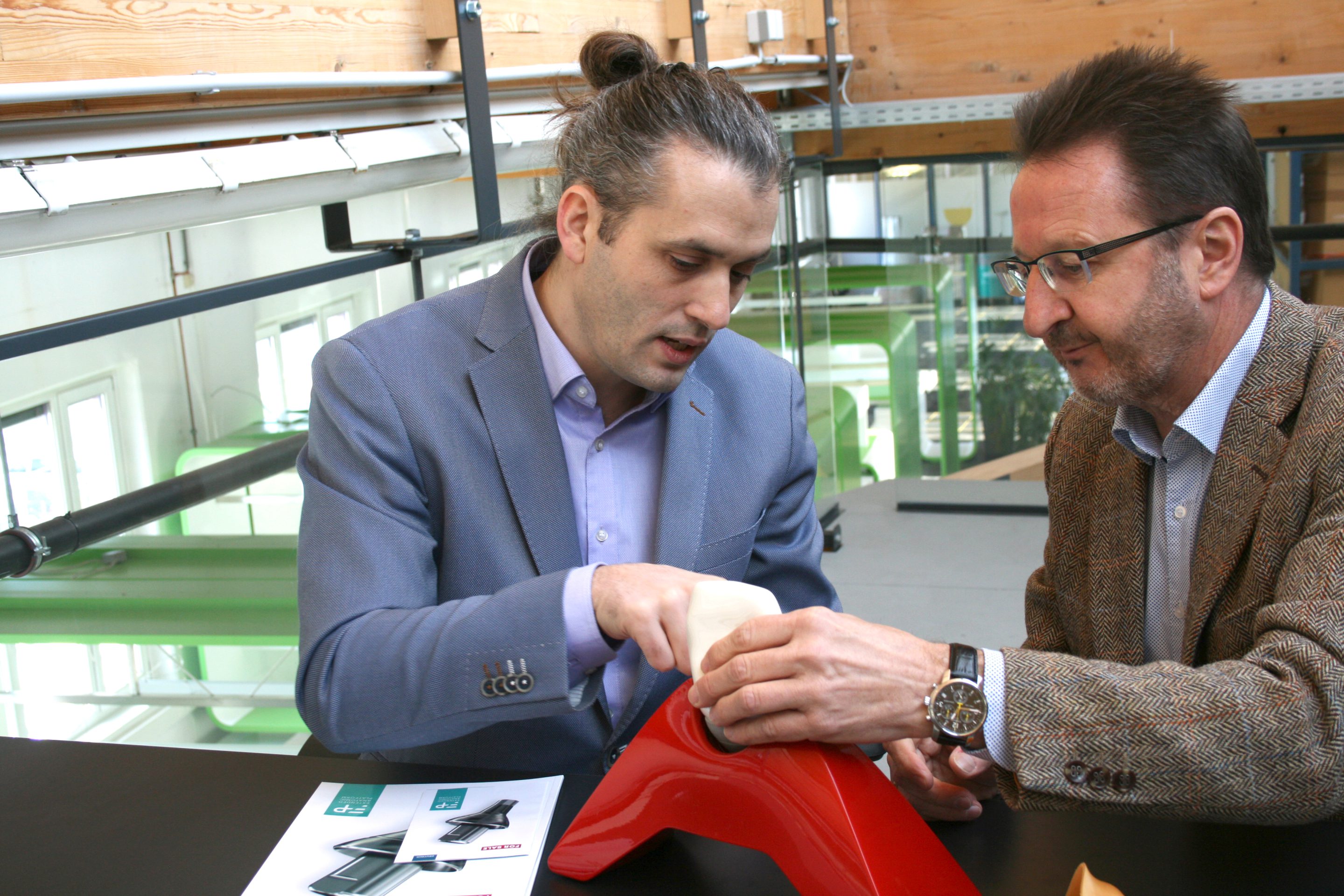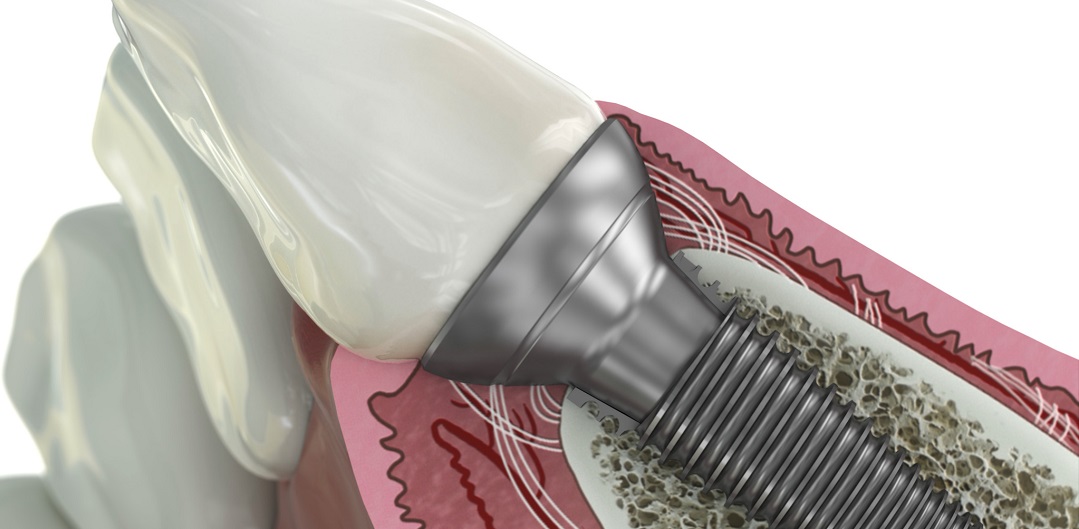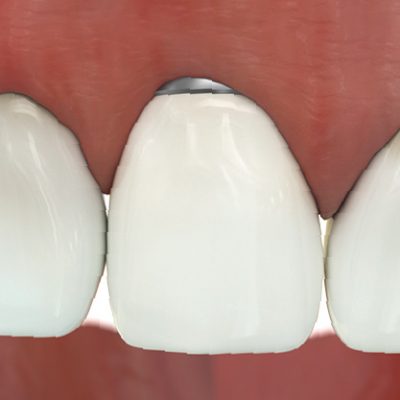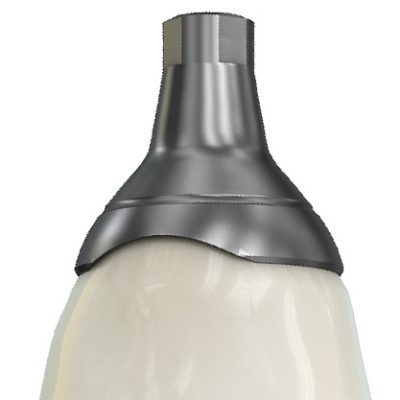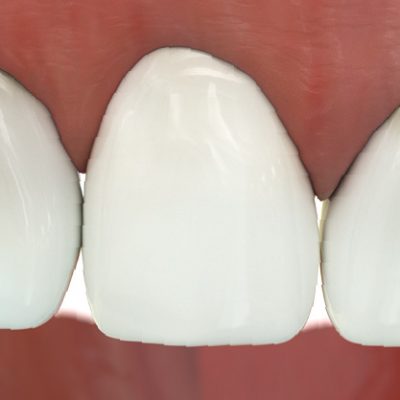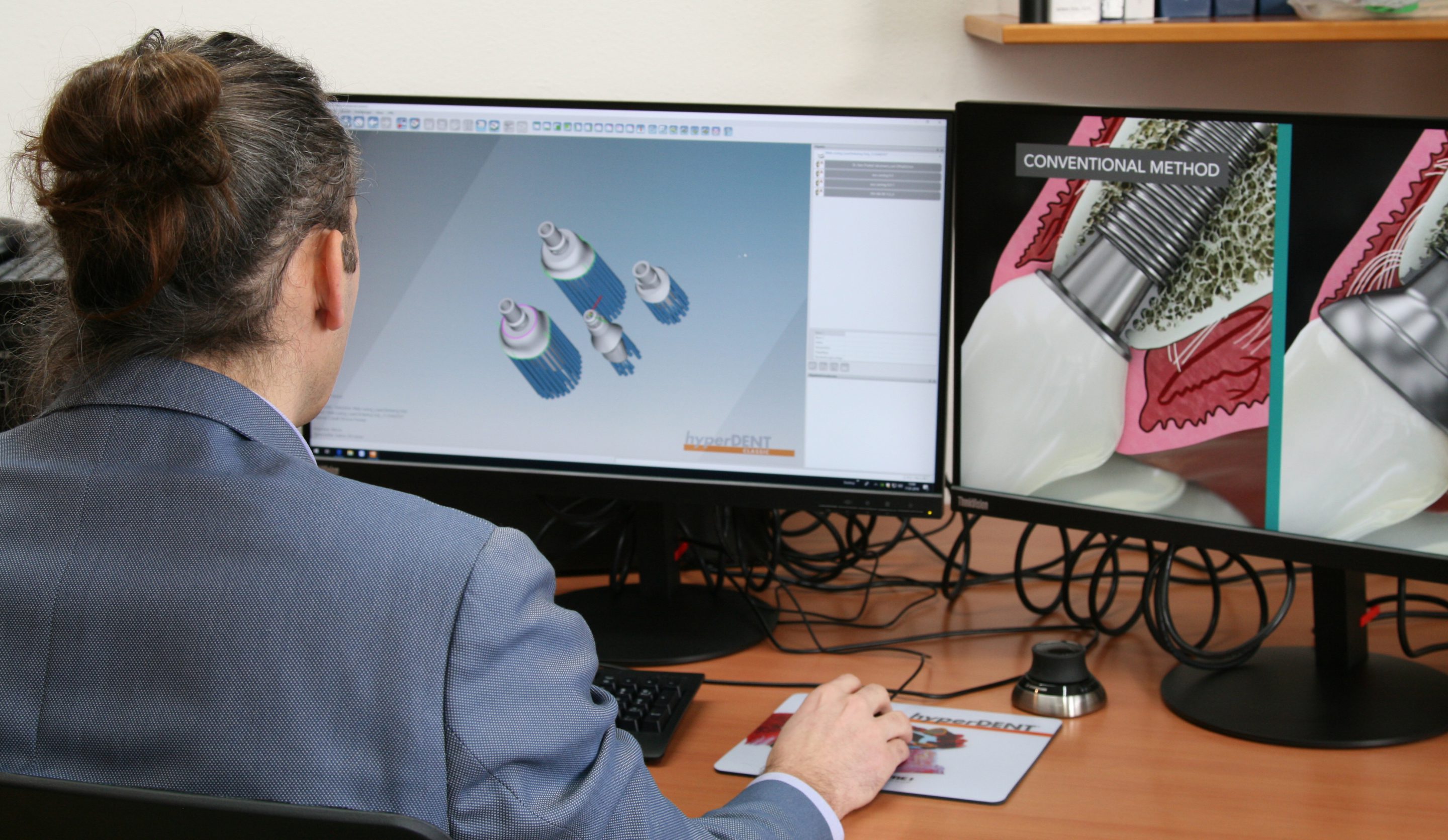Case Study - Hybrid
Extended Anatomic Platform (EAP®)Implant Prosthetics Transformation
“EAP® is a system-independent, highly esthetic, hybrid abutment solution for dental implants which is more biocompatible with better cell attachment, easier to use and scientifically proven. The EAP® abutment for dental implants can also be modified subsequently.”
Prof. Dr. Mario Kern M.Sc. M.Sc., EAP® Founder
Prof. Dr. Mario Kern is an implantologist, researcher and the inventor of the patented “Extended Anatomic Platform” (EAP®) hybrid abutment solution for which he received the 2017 German Medical Award, 2018 German Innovation Award as well as the 2019 Red Dot Award.
Prof. Dr. Mario Kern spent over 5,000 hours developing EAP®, including 200 prototypes and 160 electron microscope images to document cell behavior scientifically. The patents for the production of the biocompatible hybrid abutments have already been granted in Europe, Canada and Australia.
“A smooth surface makes cell attachment difficult, and a rough surface facilitates bacterial growth. A roughness of 0.2µm of the EAP® surface is ideal and has a positive impact on cell growth.”
Prof. Dr. Mario Kern M.Sc. M.Sc., EAP® Founder
Why was hybrid manufacturing the chosen method?
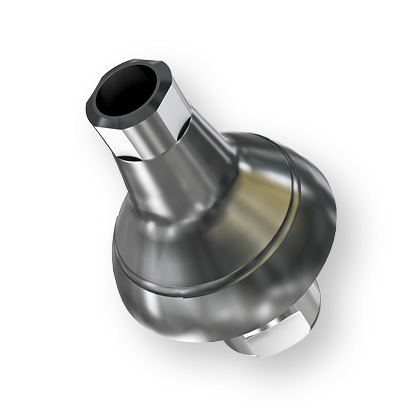
Because the thin wall structures of abutments cannot be manufactured using conventional milling techniques, Prof. Dr. Mario Kern began researching additive manufacturing in 2017 and opted for the dental hybrid solution. With FOLLOW-ME!, GE Additive and GF Machining he found perfect partners for the implementation of his innovation.
How does the hybrid process work?
hyperDENT, the FOLLOW-ME! software solution, is open, highly automated and flexible. With automated functionalities, such as nesting and the generation of ID tags for part identification, it is the ideal solution for the hybrid process. hyperDENT generates slice data for the additive manufacturing process as well as NC-code for the milling machine.
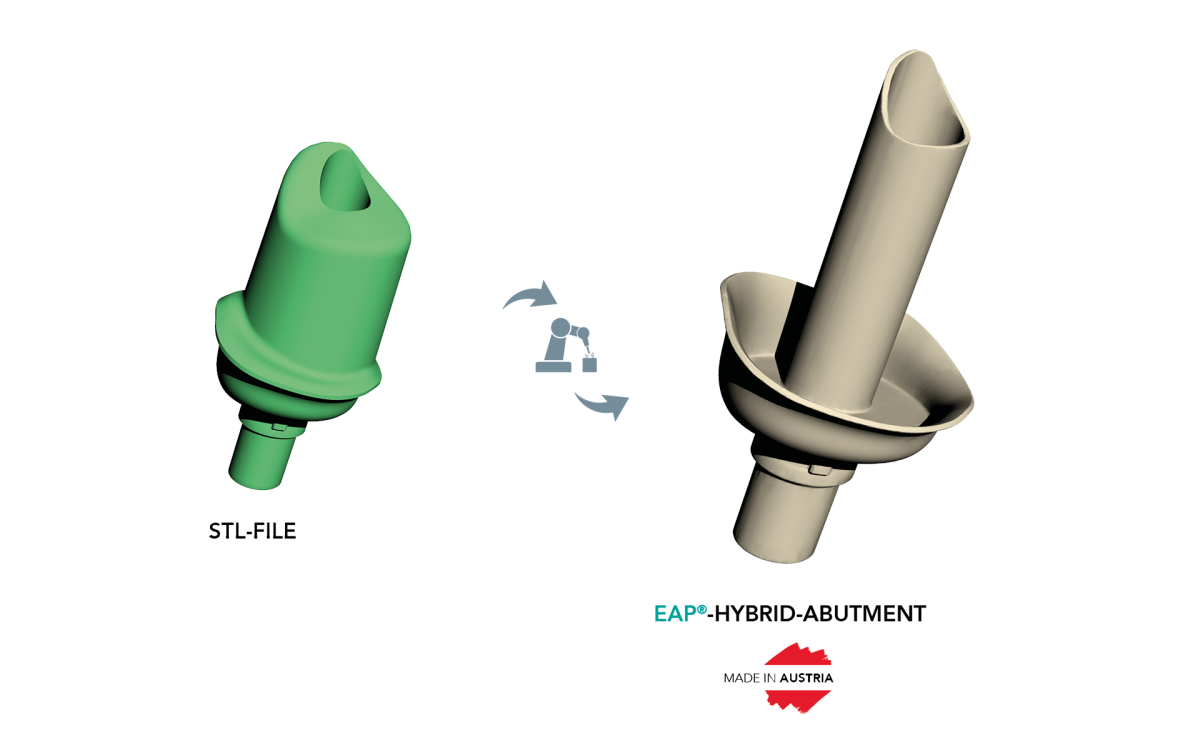
What are the advantages of hybrid manufacturing?
In addition to manufacturing complex, customized, precise frameworks and tension-free dental prostheses for improved fit in the mouth using additive technology, Prof. Dr. Mario Kern observed several additional benefits of using the hybrid solution:
- A marginal loss of material: around 85% material savings in contrast to standard milling and un-melted powder can also be reused
- 50% time saving in production compared to casting
- With a 99.6% density of the final product manufactured using the additive process, the product features better metallurgical properties than a cast part made from the same material.
“The dental hybrid process enables the resource-friendly production of my abutments with extreme accuracy. This solution combines the advantages of additive manufacturing with subtractive technology to get the best out of both manufacturing worlds, in other words, a time and cost-efficient production process.”
Prof. Dr. Mario Kern M.Sc. M.Sc., EAP® Founder

